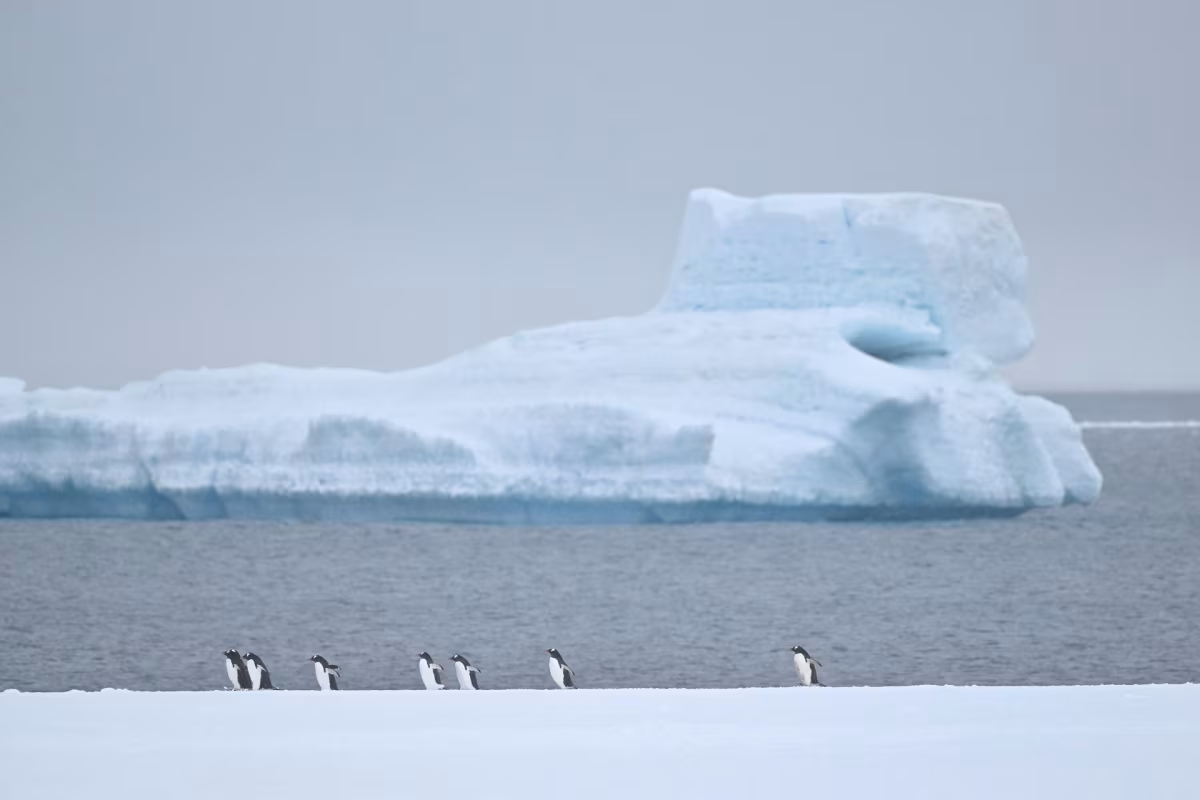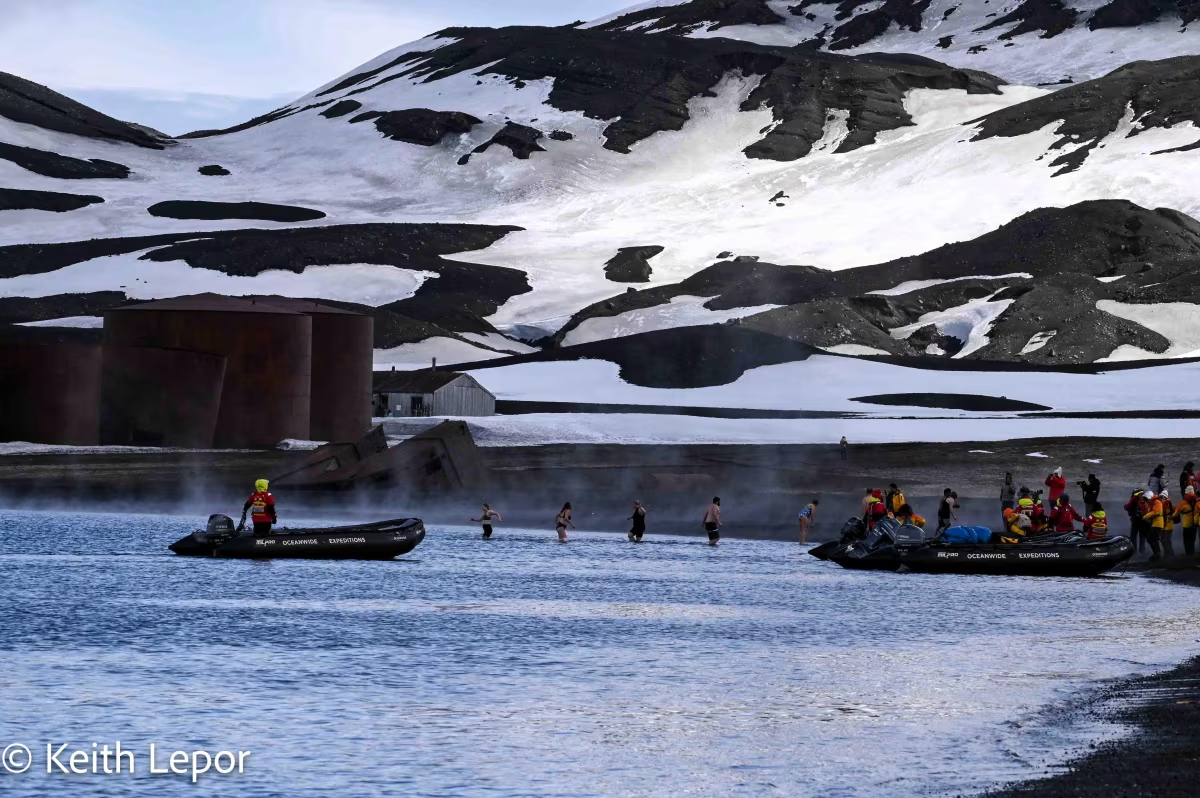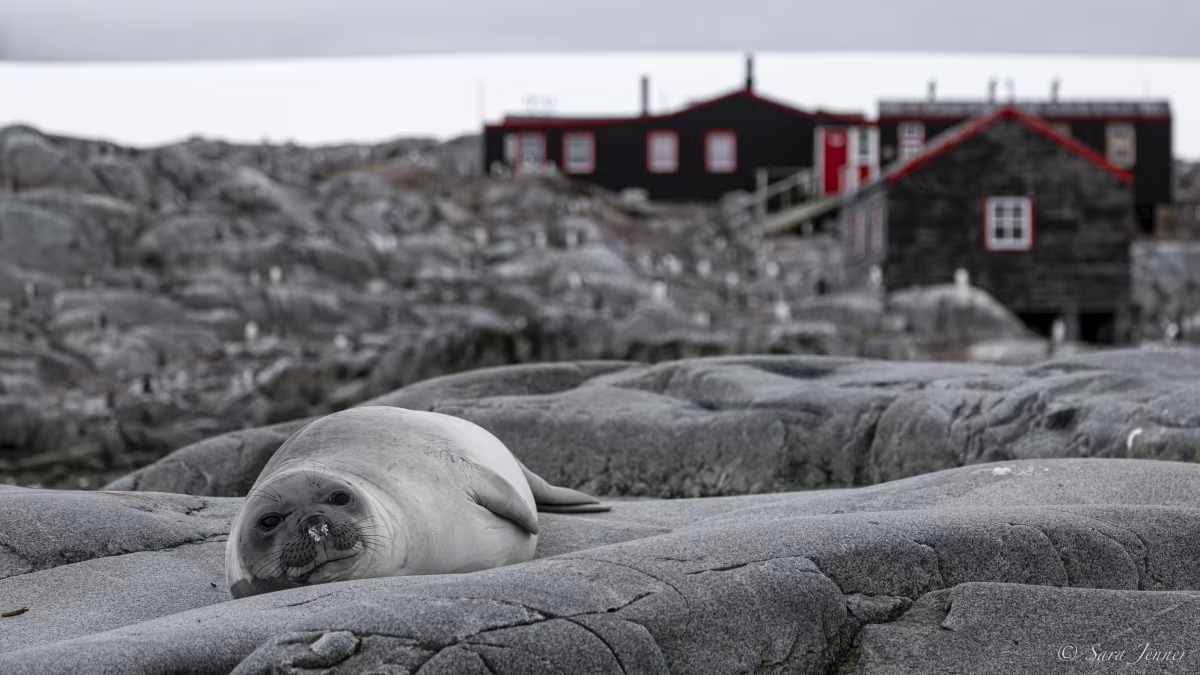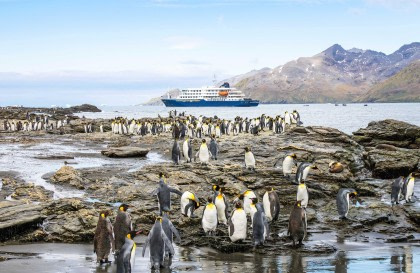By 1943, the Second World War had engulfed the planet, impacting almost every country and region on Earth, from the deserts of North Africa and the fields, mountains, and valleys of Europe to the vast oceans of East Asia and the most distant islands and archipelagos around the globe. It was amidst this tide of uncertainty and conflict that one of the most intriguing scientific and military operations of The War took place.
Organized as a joint military and scientific endeavor, Operation Tabarin had the primary goal of establishing a British presence in Antarctica, denying safe harbors to enemy vessels, and countering interest in the region by other nations, including Nazi Germany, and Japan, as well as neutral Argentina. However, what began as a military exercise soon turned into a scientific endeavor, laying the foundation for later British Antarctic expeditions, including those that contributed to the International Geophysical Year (1957–1958), the eventual establishment of permanent scientific research stations, and even the creation of the Antarctic Treaty.
Securing the Imperial Shipping Routes
Since the start of the Second World War, British shipping had been threatened by the German Kriegsmarine, with commerce raiders and U-boats harassing Imperial and Commonwealth merchant ships even at the most far-flung edges of the world. By 1943, a far greater naval threat had emerged to challenge the Royal Navy. From 1941, the Empire of Japan had stormed across Southeast Asia and the Pacific and, by 1943, controlled much of East Asia and was threatening to drive Commonwealth and American forces from the region.
For the British, the risk of the Japanese navy securing harbors in the South Atlantic, such as the Falkland Islands or South Georgia, was too great. The impact on the Allied war effort could have been catastrophic, with Axis surface fleets or submarines able to operate from bases far from their homeland and stretching Allied naval assets beyond their limit. The Nazi German expedition to New Swabia in Antarctica in 1938-39 had also proven their interest in the region.
As such, Operation Tabarin was conceived in May 1943. It would establish several bases in Antarctica, ensuring a permanent British presence in the region and gathering scientific data and local intel while denying free reign of the far south to Britain's opponents. By November, the expedition was underway. Leaving the port of Tilbury, England, aboard HMS Bransfield, a converted Norwegian sealing vessel, were 14 men, led by experienced polar explorer James Marr, veteran of Sir Ernest Shackleton's final expedition aboard the Quest. They brought together various disciplines, from botany and zoology to surveyors and meteorologists, with most already in service with British armed forces or the Merchant Navy.

Picture by Yves Adams
Establishing a foothold in Antarctica
During the voyage south, Bransfield was quickly discovered unsuitable for navigating the heavy seas ahead. After a circuitous route via Gibraltar, they met their replacement ship, HMS William Scoresby, in Port Stanley, the Falkland Islands, a tenured polar vessel that the Royal Navy had requisitioned for minesweeping duties in the South Atlantic.
The expedition made landfall on Deception Island in February 1944. Upon finding no recent evidence of Argentine or German activity, a suitable location for 'Base B' was identified. Unloading was quickly undertaken over several days, and a five-man party was left under the leadership of geologist William R. Flett. By February 11, 1944, the rest of the expedition reached the site for the second base, located on Goudier Island in the Gerlache Strait. Although not the first choice, with limited scientific opportunities, the rapidly diminishing fuel of SS Fitzroy, a cargo ship accompanying the expedition, and the presence of pack ice led to the establishment of 'Base A,' which would become the famous Port Lockroy base, often visited by expedition cruises to Antarctica.
In the following weeks and months, generators were established, base buildings were erected, and reports and posts began to be sent back to the UK via the Falkland Islands. Although first performed under total secrecy, by April 1944, both bases' presence was shared globally via a BBC announcement.

Picture by Keith Lepor
Scientific studies at the edges of the map
Both bases immediately began scientific work, making meteorological observations and reporting sea ice. Geological surveys were also performed, while glaciology and physiography were the focus throughout the first year of operation.
At Port Lockroy (Base A), rock samples began to be collected, and a botanical survey performed by noted botanist Elke Mackenzie (then known as Ivan Mackenzie Lamb), discovered several unrecorded species of lichens - a significant contribution to the taxonomy of Antarctic lichens. Throughout the first year, topographic work was a major focus for the expedition's men. A full survey of Wiencke Island was completed over 25 days, contributing significantly to mapping the surrounding region.
By the start of the Antarctic winter, the significance of the work of both bases was clear, but as the last light fell and Antarctic darkness set in, the 14 men spread across both remote bases, hunkered down for the harsh months ahead before their scientific work could continue again in the spring. Harsh temperatures and life-threatening conditions followed, but eventually, the light and some semblance of warmth returned. In December 1944, William Scoresby returned to both bases, bringing additional men and stores for the erection of a third base, 'Base E,' which would be unmanned. However, after leader James Marr resigned due to poor health, this plan was abandoned, with 'Base D' instead being constructed in Hope Bay, the original proposed site of Base A. Further experiments and scientific studies continued, including plant transplantation from the Falkland Islands, the collection of fossils, and further lichen and rock sampling, along with additional topographical excursions and mapping activities.
By 1945, the list of over winterers had grown to 21 men, and the expedition's work was cemented in July of the same year as the Falkland Islands Dependencies Survey (FIDS). All men of the operation were returned to the Falkland Islands by February 1946, although Port Lockroy would remain occupied until 1962, Deception Island until 1967, and Hope Bay until 1964.
Operation Tabarin's legacy continues to this day. FIDS was renamed the British Antarctic Survey (BAS) in 1962 and is now a world-leading research center for earth system science and global climate change, working with international collaborators in the Antarctic, Arctic, and beyond.

Picture by Sara Jenner
Asserting territorial claims and the groundwork for the Antarctic Treaty
In addition to its military aims against the Axis forces and scientific focus, Operation Tabarin was also designed to counter Argentine and Chilean counterclaims against British sovereignty over the Falkland Islands, which had been made following the outbreak of the Second World War in 1939.
Throughout the early years of the war, tit-for-tat tactics were used by the British and neutral Argentina, with flags being replaced and destroyed on several islands in the Antarctic Peninsula. In establishing bases on Deception Island, at Port Lockroy, and in Hope Bay, the operation removed Argentine flags and territorial plaques placed in disputed territories across the Antarctic Peninsula and reinforced British commitment to the sovereignty of the Falkland Islands and its dependencies.
Following the end of the Second World War, there was renewed interest in Antarctica, with territorial claims to Antarctica being unrecognized and disputed by the United States - the new global superpower. In 1946, Operation Highjump began. This large-scale U.S. military operation sought to train and test military personnel and equipment in polar environments. Operation Windmill and Operation Deep Freeze would soon follow, and international interest in Antarctica as a region of untapped resources and territorial gain led to renewed unease and disputes as the Cold War grew throughout the 20th century.
The International Geophysical Year of 1957-58 (IGY) led to heightened international scientific collaboration between 12 countries, including the Soviet Union, the United States, and other Western powers. It brought together countries to research the Earth's atmosphere, oceans, and polar regions, with several Antarctic research stations being established or further developed, initially only temporarily. The success of this collaboration spurred hopes for international cooperation in Antarctica. As such, in 1959, the Antarctic Treaty was signed by the 12 countries that took part in the IGY 1957-58. As of 2024, the Antarctic Treaty has 57 parties.
Operation Tabarin contributed to the geopolitical environment that led to the creation of the Antarctic Treaty, signed in 1959. The Treaty demilitarized the continent, designated it for peaceful research, and suspended all territorial claims, preserving the scientific and cooperative spirit that began during Tabarin.
What had begun during the conflict of the Second World War had borne scientific understanding, international cooperation, and the establishment of one of the world's most significant and groundbreaking international treaties, in turn contributing to the protection and conservation of the Antarctic. While its origins may have laid in geopolitical disputes and territorial protection, the legacy of Operation Tabarin is a more profound understanding of the importance of the polar world and the power of international cooperation.
Main image by Juan Berenstein






